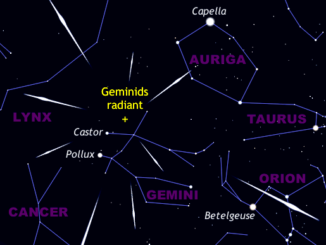
This is the second time asteroid 1998 WT24 has been in the sights of NASA’s solar system radar. In December of 2001, Goldstone obtained the first radar images of 1998 WT24, which revealed that the asteroid was about 1,300 feet (400 metres) in diameter and shaped like a Russet potato. The radar images from 2001 had a resolution of about 60 feet (19 metres) per pixel.
The new radar images achieve a spatial resolution as fine as 25 feet (7.5 metres) per pixel. They were obtained using the same DSS-14 antenna at Goldstone to transmit high-power microwaves toward the asteroid. However, this time, the radar echoes bounced off the asteroid were received by the National Radio Astronomy Observatory’s 100-metre (330-foot) Green Bank Telescope in West Virginia.
“With this upgraded resolution we can see the asteroid’s ridges and concavities in much greater detail,” said Shantanu Naidu, a postdoctoral researcher at NASA’s Jet Propulsion Laboratory in Pasadena, California, who works with the radar team and set up the observing plan for the asteroid’s flyby. “One or two other radar bright features that could be outcrops on the surface are also visible.”
The next visit of asteroid 1998 WT24 to Earth’s neighbourhood will be on 11 November 2018, when it will make a distant pass at about 12.5 million miles (52 lunar distances).
Naidu noted JPL’s asteroid radar team is also preparing to observe asteroid 2003 SD220, which will make its closest approach on 24 December at about 28 lunar distances.
“From optical observations, we know it could be anything between a few hundred metres and a few kilometres wide and that it is on NASA’s list as a potential human-accessible target, said Naidu. “But that is about it. Using radar, we should be able to see the shape of the object. For me, that is what makes this job so exciting. Every time we observe something, we are seeing something nobody has ever seen. We are making an unknown known, and as a scientist what can be better than that?”
Radar is a powerful technique for studying an asteroid’s size, shape, rotation, surface features and surface roughness, and for improving the calculation of asteroid orbits. Radar measurements of asteroid distances and velocities often enable computation of asteroid orbits much further into the future than would be possible otherwise.



